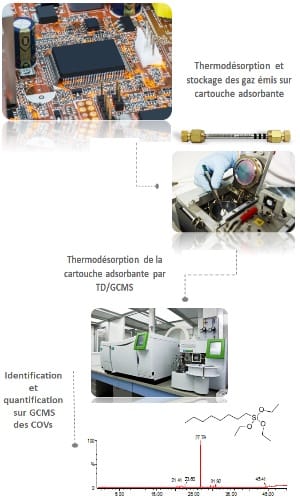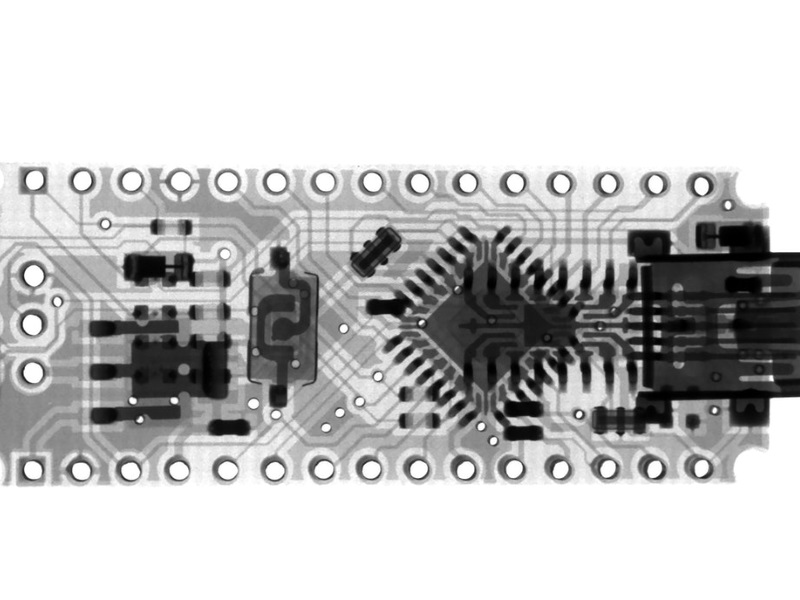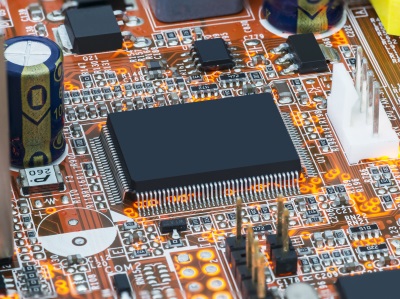Thermodesorption analysis of polymeric seals and polymeric foams
Pollution causing short circuits was observed during repetition of temperature rise / fall cycles on printed circuits.
The aim of our analyzes was to highlight the nature of the pollution and to deduce from it the part in question and at the origin of the failure on these circuits:
- Degassing of the printed circuit in degassing chamber (Markes) with simulation of temperature rise / fall cycle, storage of VOCs emitted on Tenax cartridge
- Tenax cartridge thermal desorption on ATD
- Identification and quantification on GCMS of volatile organic compounds emitted
These thermoresorptions revealed to us the presence in very large quantity (>10 ppm) of compounds belonging to the family of Silanes and Siloxanes.
A structural study on the printed circuit showed the presence of PDMS foams and seals, implicated in the phenomenon of leachables.
The accused parties were separated from the circuit, then underwent the same analysis protocol for validation of the hypotheses put forward.
Correlation between pollutants from the printed circuit and releasable from the foam and the seal.
After studying this material and changing the formulation, the material proved to be resistant to temperature cycles and once again made it possible to use these printed circuits.

 EN
EN
 FR
FR


